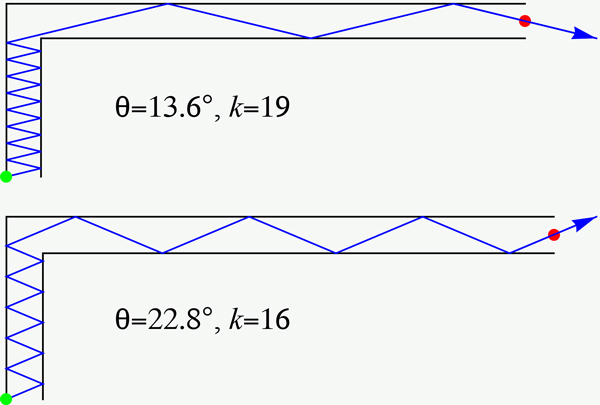Let $P$ be a simple, orthogonal polygon of $n$ edges, i.e., one whose edges meet at right angles, and is non-self-intersecting; also known as a rectilinear polygon. Treat every edge of $P$ as a perfect mirror, reflecting lightrays at equal angles.
Let $x$ and $y$ be points in $P$ that can be connected via a lightray path. Assume rays die at vertices, so such a path avoids vertices (except possibly at its endpoints if $x$ or $y$ is a vertex).
I am interested in minimum (shortest) reflection paths between $x$ and $y$, where path length is measured by the number $k$ of reflections. For example, below the upper path from $x$ (green) to $y$ (red) reflects $k=19$ times, while the lower path reflects $k=16$ times. ($\theta$ is the start angle w.r.t. the horizontal.)
Here is my question:
Q. Is there an upperbound on the number of reflections in a minimum/shortest reflection path from $x$ to $y$, expressed as a function of the minimum distance between parallel edges of $P$ that can see one another vertically or horizontally?
It is known that for a given $x$, there can only be a finite number of dark points in $P$ (discussed in an earlier MO question). Assume $y$ is not one of those dark points, so that there exists a path from $x$ to $y$.
In Q I'm trying to capture the width of corridors, but perhaps the minimum distance between parallel edges is the wrong quantity.
I've simplified my question to orthogonal polygons, but my real target is simple polygons with angles rational multiples of $\pi$. Then perhaps a bound could be obtained as a function of the minimum local feature size, or some analogous measure.
Here is an orthogonal polygon, which I drew for another purpose:


